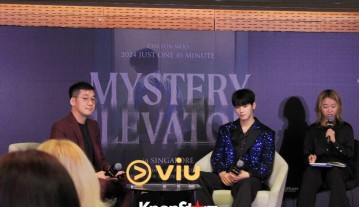New Stonehenge Findings Reveal Site Was Larger Than Ever Imagined: 17 New Monuments, Burial Mounds, And Much Larger Durrington Walls "Super Henge," Discovered By Stonehenge Hidden Landscape Project
Scientists and researchers have discovered remains of a previously undiscovered city two miles from Stonehenge, as well as a complex 17 religious monuments, several burial mounds of varying size, and the remains of a timber building used for preparation of the dead. This new discovery will yield an unprecedented amount of new information about Stonehenge, and potentially answer some of the questions surrounding the purpose and construction of the mysterious site.
The investigation was called the Stonehenge Hidden Landscapes Project, which was conducted by the University of Birmingham and the Ludwig Boltzmann Institute for Archaeological Prospection and Virtual Archaeology. The discovery was made by using new digital mapping techniques. The researchers used radar, laser scanners and magnetometers to scan up to three metres into the ground at a resolution of 10cm.
"This radically changes our view of Stonehenge," said Vince Gaffney, head of the Stonehenge Hidden Landscapes Project at Birmingham University. "In the past we had this idea that Stonehenge was standing in splendid isolation, but it wasn't ... it's absolutely huge"
The most shocking discovery was the Durrington Walls "super henge"
Just a short walk from Stonehenge itself, the "super henge" has a circumference of more than 1.5km, 330 meters long, making it likely to be the largest such structure in the world, dwarfing Stonhenge in size and scope.
The electronic survey revealed this circular earthen mound was flanked with rows of posts or stones. Archaeologists say it appears there were 60 totems in the structure, and some of the totems are expected to still survive beneath the banks of soil surrounding the monument.
"Up till now, we had absolutely no idea that the stones were there," said Professor Vince Gaffney of Birmingham University.
The stones are about three metres long and 1.5 metres wide, although they are currently laying on their side, buried beneath the banks of the henge. It is thought they were brought to the site at some point around 2500BC and may have stood upright.
"They did lots of strange things. They killed monuments, changed them, reappropriated them. They developed over many hundreds of years, so the people who started them were not the people who finished them," Gaffney said.
The survey also mapped 17 previously unknown ritual monuments in Stonehenge's immediate vicinity, indicating the site was actually a hive of activity at the center of a bustling community. It was not a quiet or remote location as some previous theories contended.
Another one of the new structures is a Stone Age burial mound, incorporated into a huge timber building. Archaeologists speculate this was probably part of a complicated process of exposing the dead to the elements before "de-fleshing" the bones and burying them in earthen mounds.
Archaeologists also found massive pits which appear to have astronomic alignments with Stonehenge, previously unknown burial mounds and evidence of Bronze Age, Iron Age and Roman-era settlements.
"Despite Stonehenge being the most iconic of all prehistoric monuments and occupying one of the richest archaeological landscapes in the world, much of this landscape in effect remains terra incognita," project leader Professor Vincent Gaffney said.
The survey will be analyzed and packaged to help understand the evolution of the Stonehenge site over the millennia, he said.
"New monuments have been revealed, as well as new types of monument that have previously never been seen by archaeologists. All of this information has been placed within a single digital map, which will guide how Stonehenge and its landscape are studied in the future. Stonehenge may never be the same again."
Terence McKeown, is the president of Lightship Entertainment and the film's Canadian executive producer for a film about the project.
He said, "What Stonehenge appears to have been was the spiritual centre of a sophisticated culture," McKeown said.
"The population around Stonehenge clearly included accomplished engineers, surgeons, artisans, and there's evidence they had close ties to Europe that advanced their skills," McKeown said.
For the film, the Vancouver visual effects company Sequence Group recreated Stonehenge and its surrounding countryside as it would have looked in 4300 BC. The scenes, which serve as backdrops for dramatic re-enactments in the film also show viewers what Stonehenge looked like when it was first built.
"Evidence shows that these big stones at Stonehenge were probably finished to be gleaming white by stonemasons," McKeown said. "It's really quite stunning."
In America a documentary titled Stonehenge Uncovered from the Smithsonian will reveal the details of the find and will air on Thursday, Oct. 9 at 8 p.m. on CBC-TV.
In England a documentary called Operation Stonehenge: What Lies Beneath will cover the research. It is due to be broadcast on BBC Two at 20:00 BST on Thursday 11 September.
















